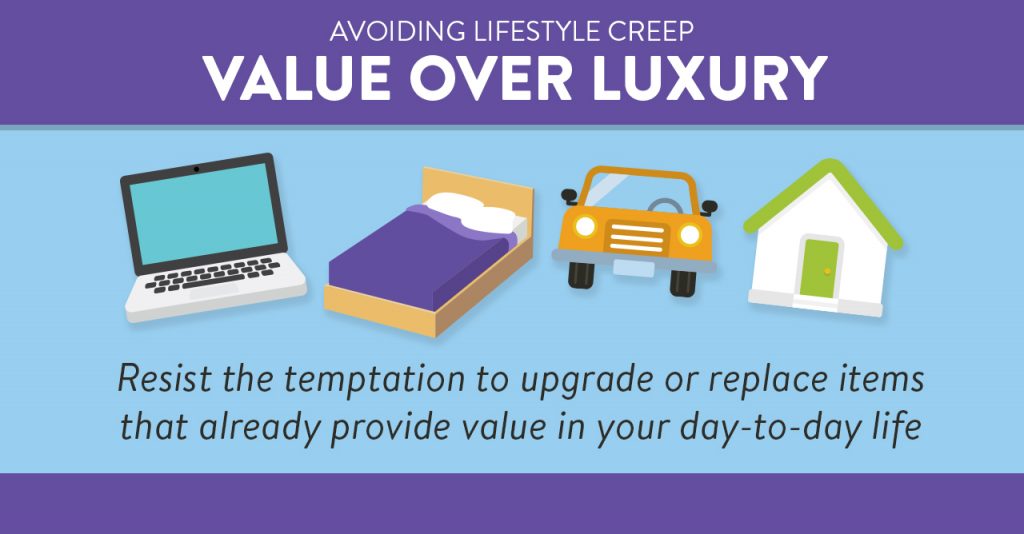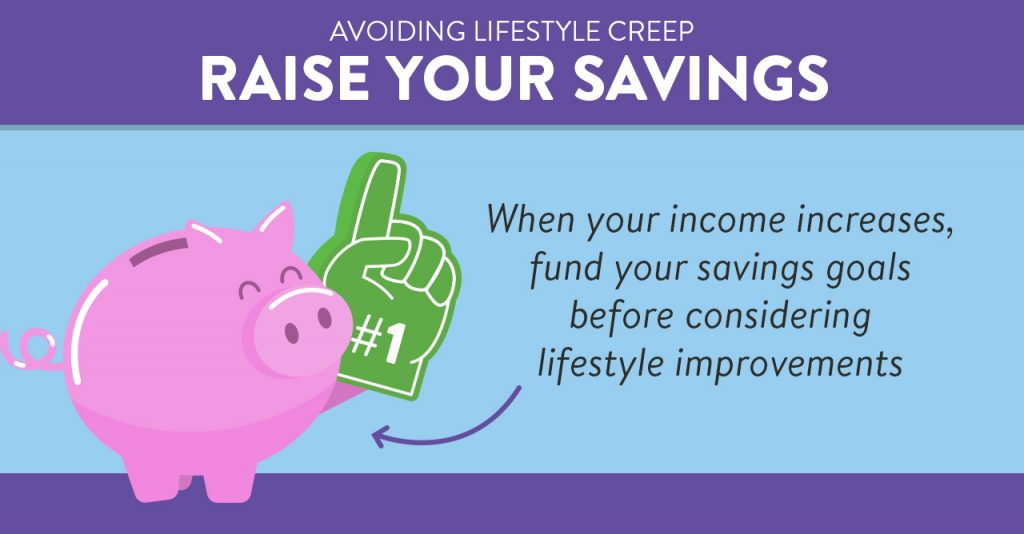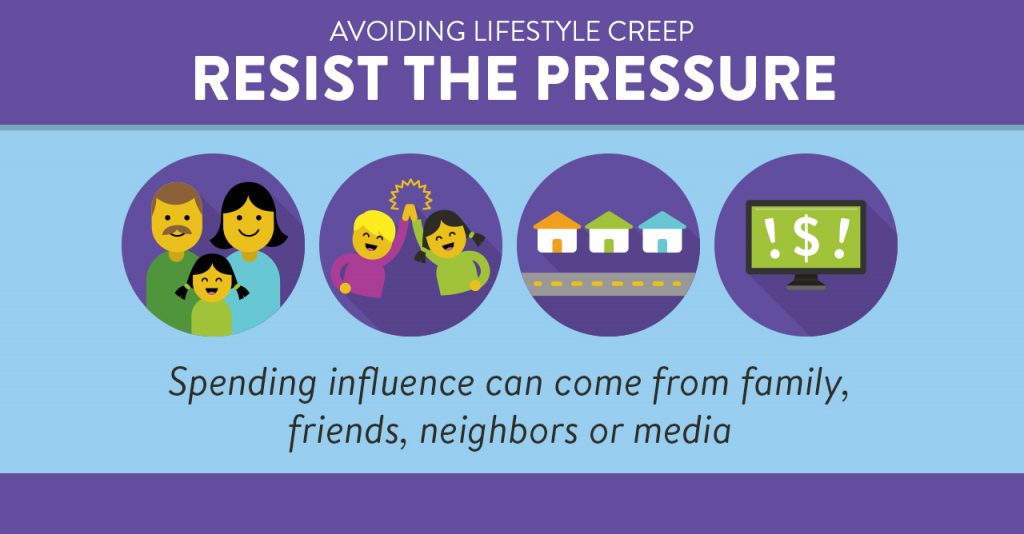
How to stop lifestyle creep in its tracks
Have you ever caught yourself daydreaming about the amazing lifestyle changes that await you just beyond your next pay raise?
Or fantasized about how to spend a work bonus, only to have the money instantly disappear into your monthly spending?
If this sounds familiar, you might be prone to lifestyle creep.
What is lifestyle creep?
Lifestyle creep—also known as lifestyle inflation—is the tendency to increase your spending as your income increases.
Lifestyle creep is a common phenomenon for young adults in their 20s and 30s.
On the surface, it might not seem like a big deal. After all, when you earn more money, you have more money to spend. But this can be financially dangerous when it happens so gradually that you don’t even notice where your extra funds go.
Goods and services that once were considered luxuries slowly slide into your routine spending. Lifestyle creep can easily sabotage your long-term savings goals and make it harder for you to adjust to any future decreases in your pay.
The good news is that protecting yourself from lifestyle creep is not that hard to do once you spot it.
How to stop lifestyle creep
We’ve rounded up five ways you can counter lifestyle creep by using your money and mind.
|1| Write down your goals
This step is so simple you might be tempted to skip it. But don’t!
Studies show that writing down your goals makes you 1.2 to 1.4 times more likely to accomplish them.
The process of making a list improves your encoding process—meaning you’re more likely to remember what you’ve written down. The list can also serve as a visual reminder of what you’re working toward.
Get a pencil and paper, and make a list of your biggest financial goals. Are you looking to launch a business? Retire early? Start a family? Build a dream home? The more detail you can provide, the better.
Keep the list somewhere you will see it often so that your financial priorities are top of mind. That way, the next time you get an increase in income, you’ll know exactly what to do with it.
|2| Pay yourself first
Paying yourself first simply means putting a portion of your earnings toward your savings goals before any money hits your regular budget.
When part of your paycheck (or raise or bonus) is safely out of sight in a savings account, you’re less tempted to spend it in other areas. Paying yourself first also gets you in the habit of saving regularly.
For added motivation, rename your savings account to match one of the goals on your list. It feels more satisfying to fund a specific goal or vision than it does to sock money away into a generically titled “savings account.”
At Dupaco, you can open as many You-Name-It Savings accounts as you’d like—for projects, experiences, you name it!
|3| Build a budget
Creating and maintaining a budget is an essential part of your financial well-being. You can use any budgeting method that works for you (apps, spreadsheets, notebooks or envelopes) if you’re able to capture and record your monthly spending reliably.
Learn how to create a zero-sum budget >
Keeping a budget allows you to track changes in your spending patterns (like lifestyle creep) that you wouldn’t notice otherwise.
It also allows you to create a framework that reflects your goals and priorities. It’s easier to stick to a budget when you’re truly excited about the milestones you’re saving for.
|4| Stop comparing yourself to others
It’s hard not to compare ourselves to our friends and family—especially in the age of social media.
We all have access to an endless feed of our friends’ vacations, new purchases and lifestyle upgrades. And seeing these images can make us question our own lifestyle.
The social media feed can quickly become a form of indirect peer pressure, encouraging us to spend our money in ways that we wouldn’t otherwise.
The next time you sense a twinge of envy, remind yourself that everyone’s financial situation and goals are different. Just because your friends and family can afford to spend money in certain ways doesn’t automatically entitle you to spend it the same way—at least not without sacrificing what’s important to you.
Your budget is your road map to fulfilling your financial goals. Don’t let others distract you from your vision or rob you of the contentment of being happy with what you have now.
|5| Get creative with your upgrades
You know your goals, you’ve got your budget and you’ve paid yourself first.
Now it’s OK to treat yourself a little bit!
Keep in mind that the most meaningful lifestyle upgrades for you might not be the ones with the highest dollar value. Make a list of “treat yourself” contenders. And highlight which ones would increase your happiness every day.
Studies show that spending money on things that buy us time (instead of material goods) makes us happier. Rather than splurging on name-brand shoes, consider paying for meal delivery, help with errands or a cleaning service.
On the material side of things, rather than upgrading your home, vehicle or clothing, look for small ways to make what you already have more enjoyable. Lifestyle upgrades can come in all shapes and sizes depending on your interests and priorities: A new pillow, a longer charging cable for your phone or supplies for a new hobby.
Let yourself enjoy the simpler and less expensive upgrades to become less dependent on the costly ones.





